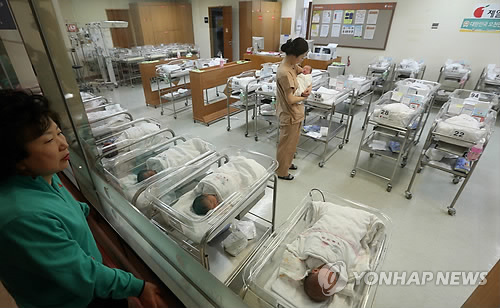- California Assembly OKs highest minimum wage in nation
- S. Korea unveils first graphic cigarette warnings
- US joins with South Korea, Japan in bid to deter North Korea
- LPGA golfer Chun In-gee finally back in action
- S. Korea won’t be top seed in final World Cup qualification round
- US men’s soccer misses 2nd straight Olympics
- US back on track in qualifying with 4-0 win over Guatemala
- High-intensity workout injuries spawn cottage industry
- CDC expands range of Zika mosquitoes into parts of Northeast
- Who knew? ‘The Walking Dead’ is helping families connect
Boys over girls? Not so much anymore in South Korea
105.3 boys born for every 100 girls is the lowest rate since data collection began in 1981
Less boys are being born in South Korea than ever before as of 2013, Statistics Korea said Tuesday in a report.
There are 105.3 boys born for every 100 girls, the lowest rate since data collection began in 1981.
The sex ratio of boys was around 107 through the early 1980s before it jumped to 111.7 in 1986. It hit an all-time high in 1990, at 116.5. Since 2000, the number has lingered around 110.
Koreans gave little attention to baby gender until 1970, as families had many kids. With the launch of the government’s two-child promotion in 1980, however, more and more families sought to birth boys, as it’s long been important to carry on family names in Asian society.
The average sex ratio is around 103 to 107 boys for every 100 girls. Korea, which until 2006 was above the average, saw its ratio enter the average in 2007, with 106.2.
The ratio remains above the average when taking the order of birth into consideration, Statistics Korea said. Of all third-born children last year, male births trumped female ones 107.8 to 100.
For fourth-born children, the ratio was 109.8.
















